Government to fund 180 local projects to boost water quality
£11.5m extra funding announced to boost tree planting, habitat restoration and flood management across England through the Water Environment Improvement Fund.
Read more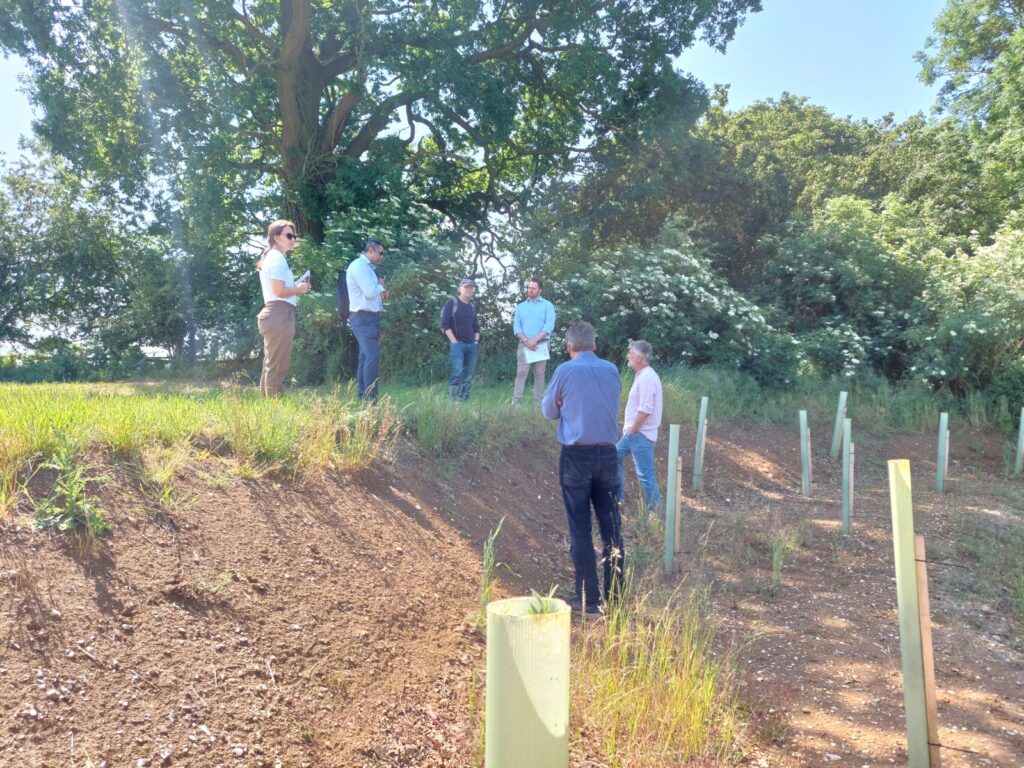
Area: 22 hectares
Location: Buckinghamshire, England
Forest Manager: Tilhill
Carbon Project Developer: CarbonStore
Objectives: Carbon Sequestration, Biodiversity Enhancement, Community Access
Trees Planted: 46,407
Year Planted: 2022
Carbon to be Sequestered: 6,800 tonnes
Tilhill Forestry, working closely with the farmer, designed the woodland creation plan and applied for the EWCO grant funding.
The aim was to diversify the farmland through incorporating mixed broadleaf tree species alongside the existing farm business.
The farmer’s objectives are to diversify the business through incorporating woodlands onto the family run farm, opening up opportunities for a flexible farm business which, long-term, will provide a space for the local community for recreation alongside the mental and physical health benefits associated with woodlands.
More than 46,000 trees were planted across three compartments on the farm. Tilhill Forestry and the farmer chose a diverse mix of native broadleaved species for the biodiversity and wildlife habitat benefits. The planting scheme meets the UK Forestry Standard (UKFS), the reference for sustainable forest management across the UK.
The main broadleaf trees planted are native species such as hornbeam for their longevity and benefits to wildlife. Hornbeam which can live for over 300 years, produces fruits and provides shelter for birds.
Pedunculate Oak was planted across the site as native species for biodiversity as its flowers, leaves and fruits supports hundreds of insects, invertebrates, and birds as their main food source.
Throughout the Autumn many mammals feed on their acorns, whilst the bark can provide roosting spots for bats.
Wild cherry is a British tree chosen for the beautiful blossom it produces providing pollen and nectar for bees alongside an abundance of fruit for birds and people.
White willow provides the added benefits of being a natural medicine to relieve pain for not only humans but for certain animals also.
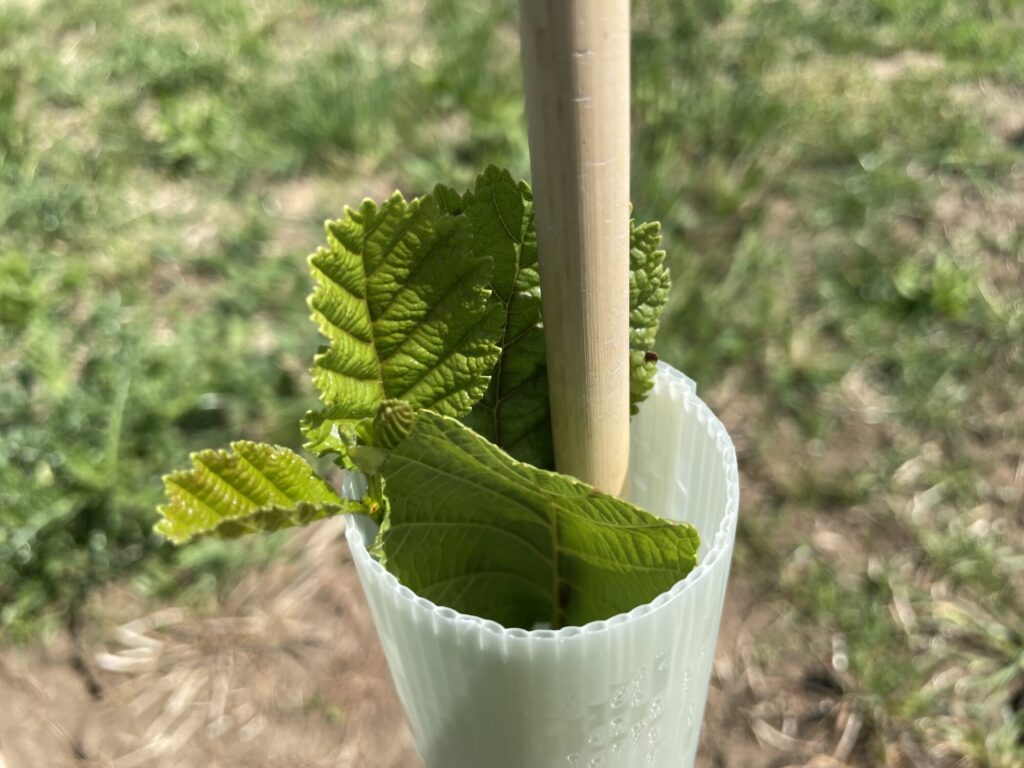
Over 1,700 Sweet chestnut (Castanea sativa) have been planted as naturalised broadleaf species which has adapted to Britain’s climate and conditions, a multipurpose tree which can live up to 700 years and is suitable for coppicing. It produces edible nuts which have been a food staple for both humans and livestock for thousands of years.
Over 2,800 native woody shrubs have also been incorporated including spindle (Euonymus europaeus) and guelder rose (Viburnum opulus) chosen for their colour, leaves and fruits for visual impact and value to wildlife.
Combined deer and rabbit fencing alongside the use of easy wraps were used to protect the trees in their early years of establishment from the significant population of Muntjac, Roe and Fallow deer.
The fencing and easy wraps reduce the costs associated with larger 1.5m tubes whilst reducing the amount of plastic in the scheme. A low vigour grass mix with 4% clover was also sown in the autumn to suppress weed competition and encourage good growth of the trees in their early years.
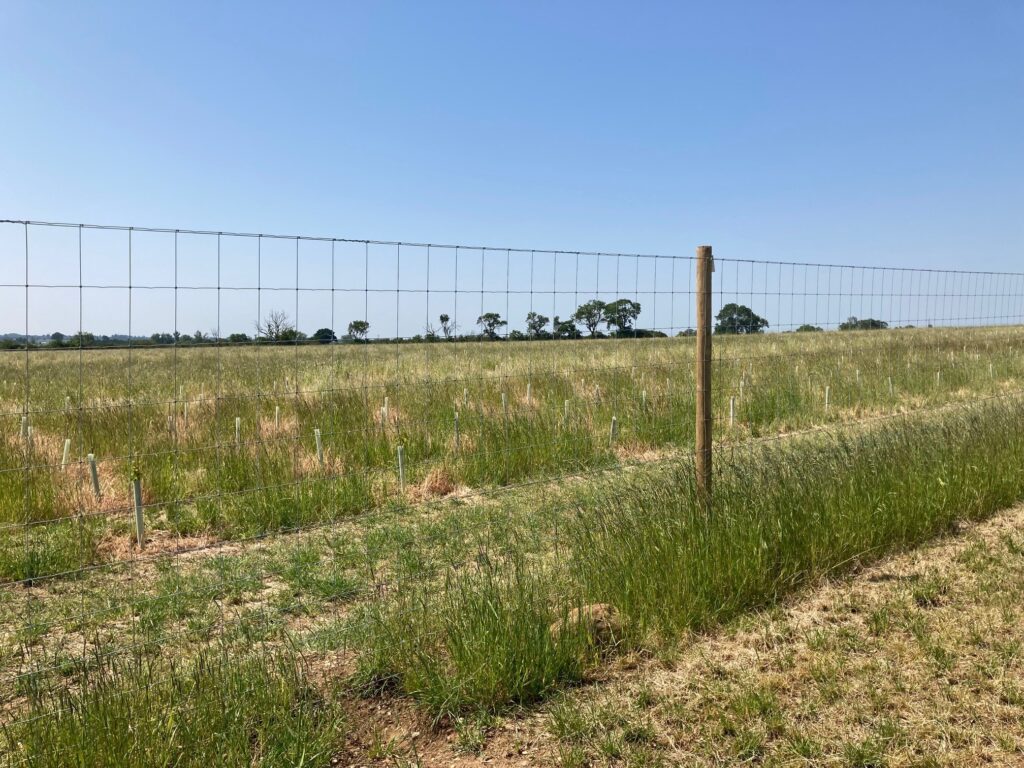
5 hectares of woodland is intended to provide permissive access for the local community once the trees are established, this aspect was important to the farmer. A 2021 Forest Research report indicated that UK woodlands boost mental health and is estimated to save £185 million in treatment costs. The woodland will provide opportunities for physical exercise, forest bathing and forest therapy found to be beneficial in health and alleviating anxiety.
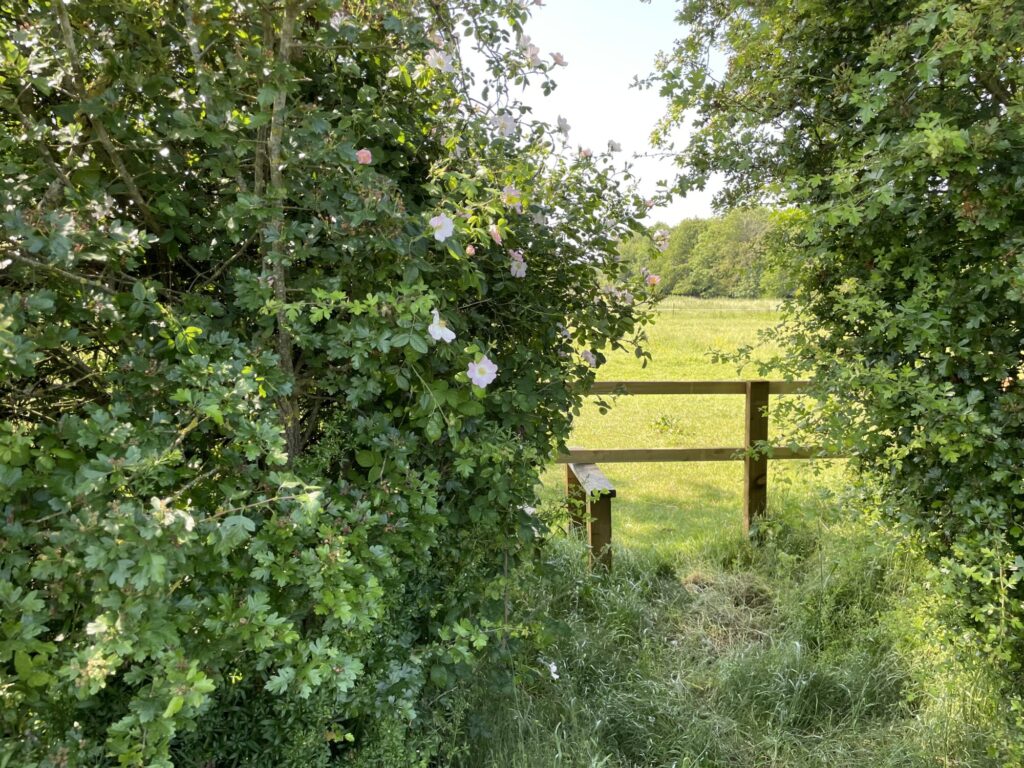
The site features two ponds in which native trees have been planted along the water course to provide shading to keep the water cool in the summer and prevent flooding during heavy rainfall, whilst providing a food source and habitat to water loving wildlife. Trees can also filter pollutants through their root system, improving water quality.
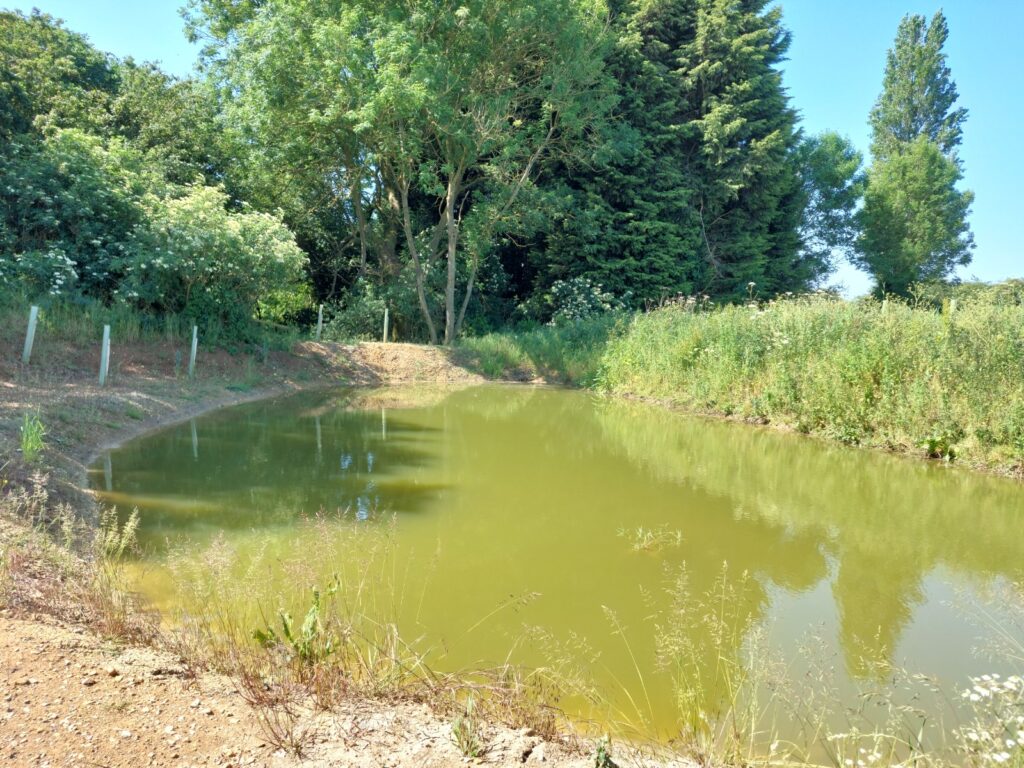
As trees grow, they remove carbon dioxide which is a major contributor to climate change. The diversity of tree species will allow for resilience against climate change, reducing the risks of pests and diseases, facilitated by a forest management plan to ensure adaptation and resilience.
Trees capture carbon within their timber, leaves and roots as well as their soils. These woodland compartments are expected to capture 6,900 tonnes of CO₂e over the next 100 years, according to the Woodland Carbon Code. The expected tonnes to be sequestered is the same amount as that emitted from driving 17.25 million miles in a petrol car.
CarbonStore, Tilhill’s woodland carbon division supported the farmer through all elements of the carbon transaction. CarbonStore worked with the farmer and the forest manager to complete all the necessary documents for validation of the project by the Woodland Carbon Code.
The project has generated credits which will allow the farmer to sell to companies looking to support UK woodland creation.
In partnership with Tilhill, CarbonStore can help you deliver peatland restoration and woodland-based carbon mitigation projects that not only achieves the highest possible standards in carbon offsetting but also offers many widespread benefits which we can all enjoy.
Please contact David McCulloch, the head of CarbonStore, personally either by email (david.mcculloch@carbonstoreuk.com) or by phone (07500 950832).